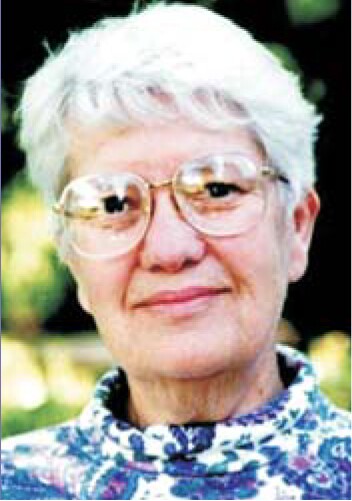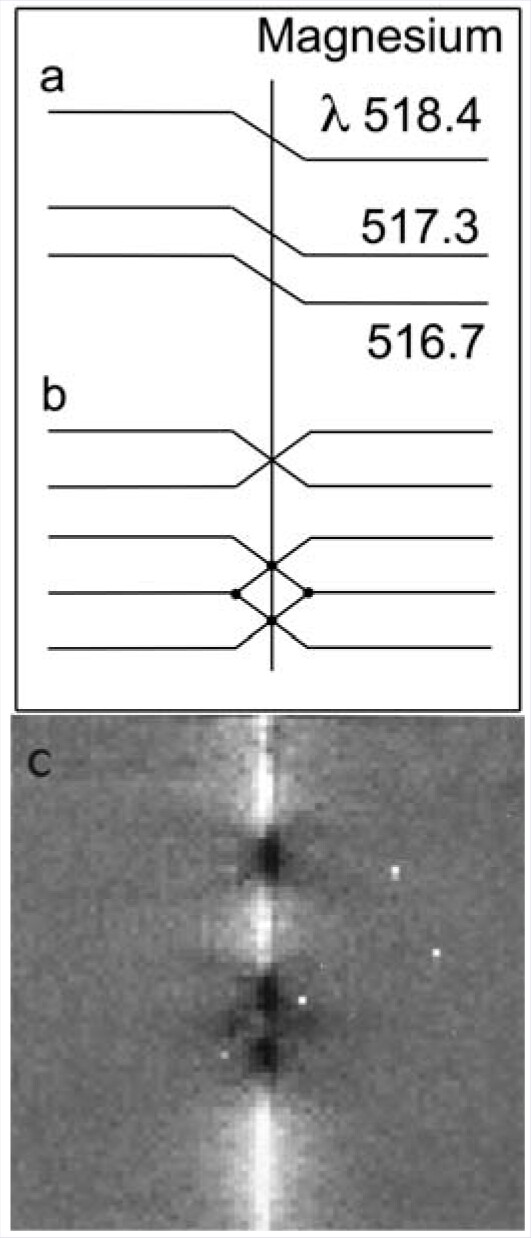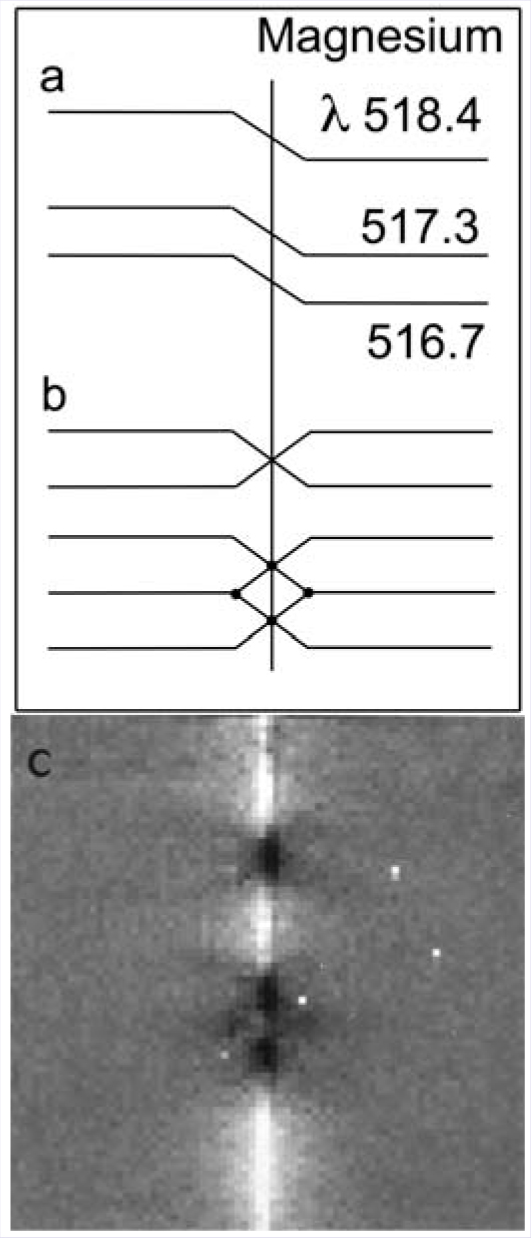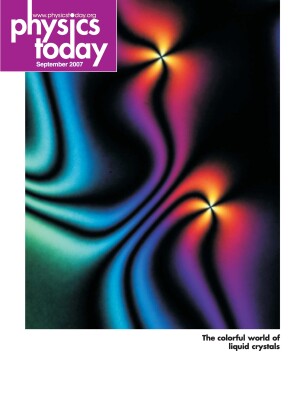A two-way galaxy
DOI: 10.1063/1.2784700

In August 1948 when I had just turned 20, I followed my husband to Cornell University and entered the small (two faculty) astronomy department as a candidate for a master’s degree. Bob was completing his PhD studies under Peter Debye at Cornell, so I opted to finish at the same time as he would. Although I was determined to later get a PhD degree in astronomy, most of my classes at Cornell were in physics. I had the unforgettable experience of studying under three remarkable scientists, Hans Bethe, Richard Feynman, and Philip Morrison.
Phil Morrison became a friend of three generations of Rubins, and Bethe and I would talk at scientific meetings, but I never interacted with Feynman after June 1950, when he left Cornell for Caltech, just one week before my master’s oral exam. He was then the physicist scheduled to participate in my orals. However, Feynman’s influence on my research continues, principally via his remarkable lectures delivered in 1964 to standing-room-only audiences at Cornell and published as The Character of Physical Law. 1 I return to this book on those rare but wonderful occasions when an astronomical observation seems inexplicable or unbelievable, or just to remind myself of the manner in which science describes the wonders of nature.
Here’s an example employing Newton’s law of gravitation. A star at distance r from the center of its galaxy will orbit with velocity V, such that V 2 r equals the total mass M interior to r multiplied by the gravitational constant G; that is, MG = V 2 r. Centuries ago, scientists knew that orbital velocities are slower for planets farther from the Sun. Newton’s genius was in understanding that MG = V 2 r applies not only to the Sun and the planets of the solar system, but also to the moon orbiting Earth, and to the moons orbiting the planet Jupiter.
In his book, Feynman asks, “How far does this law extend?” Over distances as great as double stars? Feynman says yes. “How about a bigger distance,” as great as galaxies? Feynman’s answer is yes, but: “Accuracy in these calculations and measurements is not anywhere near as careful as in the solar system. … The fact is that the way the galaxies behave so far does not seem to be against the proposition” that “what holds the galaxy together is gravitation.”
Little more than a decade after Feynman’s book was published, we astronomers faced a dilemma. Optical and radio astronomers had struggled hard to determine accurate orbital velocities of gas and stars in a few dozen spiral galaxies. We observed that stars far from the centers of their galaxies orbited with velocities equal to those of the stars much closer to the center. (See my previous column, Physics Today December 2006, page 8
Two explanations were examined: Modify Newton’s law to make it valid over distances as great as galactic dimensions, or accept the concept that invisible matter surrounds a galaxy, far beyond the optical image. Most astronomers chose the latter explanation, thus acknowledging that most of the matter in a galaxy is dark—that is, it is not radiating at any wavelength of the electromagnetic spectrum. The alternative explanation, still discussed by less than 1% (but very smart members) of the astronomical community, requires that Newton’s law be modified. Unfortunately, it’s too late to learn which option Newton or Feynman would have chosen.
NGC 4550, a weird galaxy
Occasionally, circumstances force us to enlarge our interpretation of Newton’s law of gravitation, and expand our admiration of Nature’s cleverness. Observations of NGC 4550, a galaxy near the center of the Virgo cluster of galaxies, precipitated such a new understanding. In 1989 I embarked on a program with Jeffrey Kenney of Yale University to study the motions of stars and gas in galaxies in the Virgo cluster, the nearest galaxy cluster to our Milky Way galaxy. NGC 4550 is the most remarkable of the nearly 100 galaxies we studied. It is a highly flattened disk galaxy that is viewed nearly edge-on. NGC 4550, discovered in 1784 by William Herschel with his 18-inch telescope, was one of thousands that he discovered. Herschel did not observe alone. His sister Caroline devised the nightly observing programs and measured positions by day and recorded positions and fed William through the nights. It was Caroline’s earlier success in discovering new nebulae that led William to undertake his systematic sky search. 2 In John L. E. Dreyer’s 1889 New General Catalog the galaxy was numbered NGC 4550.
I took the first spectrum of NGC 4550 at the Palomar 200-inch telescope in 1989 with the double spectrograph. Kent Ford, a colleague from Carnegie’s Department of Terrestrial Magnetism (DTM), was observing with me. A single exposure produces two spectra of the same object, one in the red spectral region to include the prominent Hα emission line and one in the blue to include strong stellar absorption lines. With the spectrograph slit placed along the major axis of NGC 4550, spectra covered 30% of the major axis on each side of the nucleus. The 2000-second exposure was recorded digitally on a CCD. The spectra, viewed at the Palomar computer following the exposure, were then transferred to magnetic tape that I carried to the DTM computer. From measurements of the displacement of the lines with respect to the rest position, I calculated the velocities of the stars and gas in NGC 4550.
I saw immediately that NGC 4550 was a rare galaxy. As expected, stellar motions beyond the nuclear region exhibited constant velocities. The Hα gas emission had a velocity equal to that of the stars, but the gas was orbiting in the opposite direction. About a dozen galaxies were known to have gas disks that orbit counter to the direction of the stars, so this was not an exceptional discovery. But from the first look at the spectrum, I had a vague sense that each stellar absorption line was double.
Because I normally optimize spectra for the bright Hα line, I was less familiar with the pattern of blue spectral lines. Although I measured the emission lines easily, in NGC 4550 I struggled to interpret the very faint stellar absorption lines, too weak to actually measure. In those days, the image-processing computer terminal was in a communal computer room. When either of my colleagues John Graham or François Schweizer would pass the computer room, they were roped into the “Do you believe it?” game.
Solving the puzzle
One morning, in exasperation, I decided I would not leave the computer until I understood a strange diamond pattern I could detect very faintly in the blue spectral region. Suspecting that it involved the magnesium triplet of lines (a pair at λ = 516.7 and 517.3, and a singlet at 518.4 nm), I reached for a pencil and paper and sketched the magnesium spectral region: each line flat, then diagonal across the nucleus, then flat (panel a of the figure). I then rotated the sketch 180° and redrew (panel b). There was the diamond from the close pair, plus a weaker pattern from the third line of the triplet (panel c). Instantly I recognized that I had found a galaxy in which stars orbit, some clockwise, some counterclockwise, in the same disk.
Immediately after interpreting the spectrum, I went to our library to locate a paper in the Monthly Notices of the Royal Astronomical Society. I remembered the journal and the year—but not the author—that discussed a rotating star cluster in which a Maxwell’s demon reverses the sense of rotation for half the stars. 3 I remembered reading the paper during a summer spent in Boulder, Colorado—Bob at the National Bureau of Standards, I with a desk in his office, and our fourth child learning to walk. That’s how I identified the year. So in 1991 I called the author, Donald Lynden-Bell, by then a close friend, and told him I wanted to discuss his 1960 paper. He said, “You are embarrassing me no end. That was the first paper I ever wrote, and I’ve been embarrassed by it ever since.” But he was immediately a believer and a strong supporter of my interpretation.
In 1992 John and I obtained a confirming Hα spectrum at the 4-m telescope at Kitt Peak National Observatory. Only then did we submit the paper for publication. 4 Our main effort was to convince the reader that the counterrotation was real. Our preliminary model suggested that shortly after the initial stellar disk of NGC 4550 formed, a substantial amount of captured gas settled to the plane. Since our discovery paper, a handful of observational and theoretical papers about NGC 4550 have been published. Yet we still do not understand its formation. Calculations show that the merger of two disk galaxies generally produces a puffed-up disk, then usually an elliptical galaxy. It is difficult to merge two disks and produce a flattened disk. But NGC 4550 is a rare specimen, so perhaps a rare event was involved.
How can some stars orbit clockwise and some counterclockwise without colliding? Easy. There’s a lot of space out there. In a galaxy, stars are enormously far apart relative to their diameters. Proxima Centauri is the closest known star to our Sun, at a distance of 4.2 light-years, or 4.0 × 1013 km. The diameter of the Sun is 1.4 × 106 km. Thirty million suns would fit along a line between our Sun and Proxima Centauri. Collisions of stars are really rare.
Theoretical studies of counterrotating orbits of stars in galaxies preceded our discovery of counterrotation in NGC 4550. 5 Alar Toomre discussed them as “elegant curiosities” that would “require considerable care to notice, let alone measure.” James Binney and Scott Tremaine in their exceptional book, Galactic Dynamics , published in 1987, discussed Lynden-Bell’s spherical cluster in a footnote and concluded, “However, it is unlikely that this type of model is of practical importance.” After the counterrotation in NGC 4550 was discovered, Scott, my guru on things dynamical, answered my letter with the calming words “bi-directional disks are more stable then uni-directional disks.” Later, Paul Schechter reminded me that I had speculated with him on the existence of galaxies with counterrotating disks before we knew of NGC 4550.
Other unimagined discoveries are in store as we build more imaginative devices to explore our cosmos. In fact, I haven’t told the complete story of NGC 4550 here, for it arises again in the study of another equally curious galaxy. But that’s a story for another day. Truly, as Feynman wrote, “we are all lucky to be living in an age when we can still make discoveries.” 1

NGC 4550 spectrum. (a) Sketch of lines in the spectrum. The horizontal axis is the position along the galaxy major axis; the vertical axis is wavelength. The vertical line marks the galaxy nucleus. The wavelengths of the magnesium absorption lines are in nanometers. As drawn, stars on the left of the galaxy nucleus orbit with a constant velocity of recession. Velocities change from recession to approach across the nuclear region. Stars on the right orbit with a constant velocity of approach. (b) When half the stars orbit prograde and half retrograde, the pattern is symmetrical, as shown. (c) The magnesium triplet lines are from the spectrum taken at the Palomar 200-inch.

I thank Martha Stahr Carpenter for encouraging my interest in galaxies at Cornell, Sandy Keiser for constructing the figure, and Bob Rubin for 59 remarkable years.
References
1. R. Feynman, The Character of Physical Law, British Broadcasting Corp, London (1965).
2. M. Hoskin, Sky Telesc., August 2007, p. 59.
3. D. Lynden-Bell, Mon. Not. R. Astron. Soc. 120, 204 (1960).
4. V. C. Rubin, J. A. Graham, J. D. P. Kenney, Astrophys. J. 394, L9 (1992). https://doi.org/10.1086/186460
5. A. Toomre, Astrophys. J. 259, 535 (1982) https://doi.org/10.1086/160190
J. Binney, S. Tremaine, Galactic Dynamics, Princeton U. Press, Princeton, NJ (1987), p. 221.
More about the Authors
Vera Rubin is an observational astronomer who has studied motions of stars and gas in galaxies for 75% of her life. She is at the Department of Terrestrial Magnetism, Carnegie Institution of Washington, in Washington, DC.
Vera Rubin. Department of Terrestrial, Magnetism, Carnegie Institution of Washington, Washington, DC, US .
